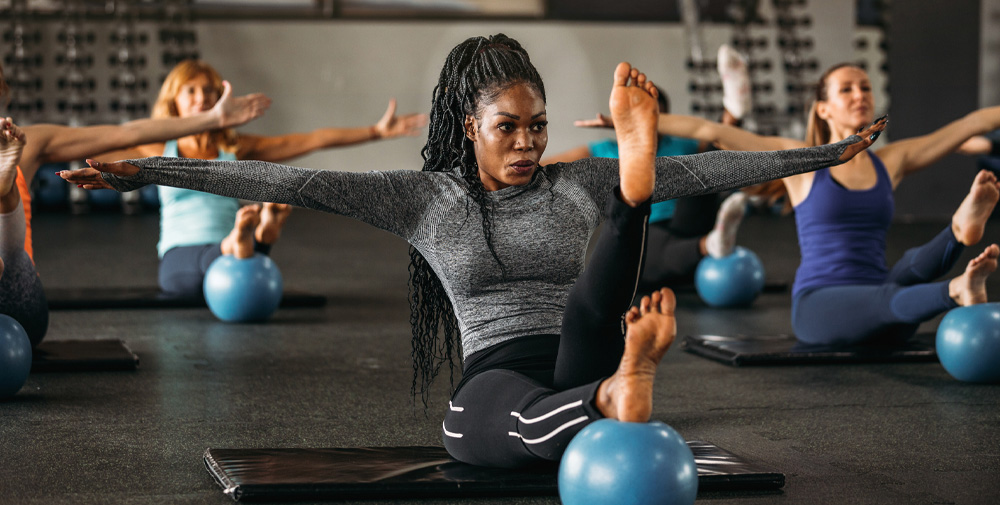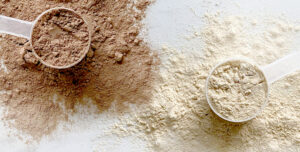A survey revealed that 2 in 5 Americans feel “too old” to work out. If we asked you how old is “too old” to work out – what age would you say? 80 years old? 90 years old? 100 years old? Well, according to the survey, 41 years old is the age Americans feel is officially “too old” to work out.
That seems crazy, doesn’t it? After all, the average life expectancy for Americans today is 77 years old. And scientists believe that the capacity of the human body currently reaches its limits at 115 years old!
So, why aren’t more people living to 115 then, you ask? It’s mostly because of ailments and vulnerabilities that accompany old age. But what if there was something that you could do to increase your chances of living to 100 years old (and beyond)! You would definitely take advantage of whatever that something was, right?
Luckily for you, that something happens to be regular exercise, according to a recent study that found that exercising helps you live longer no matter when you start. That’s right, the study “found that maintaining physical activity from adolescence into later adulthood was associated with a 29% to 36% lower risk for all-cause mortality and that being inactive but increasing physical activity during midlife was associated with 32% to 35% lower risk for mortality.”
Therefore, this study provides evidence that becoming physically active later in adulthood (between 40 to 61 years old) may provide comparable health benefits to people who have been working out their entire lives.
So, do you think that 41 is still “too old” to work out now? That’s what we thought…
How Much Should You Exercise Based On Your Age?
The Physical Activity Guidelines for Americans, which provides science-based guidance to help people ages 3 years old and older improve their health through participation in regular physical activity, states that “moving more and sitting less have tremendous benefits for everyone, regardless of age, sex, race, ethnicity, or current fitness level.”
Physical Activity Guidelines for Americans
- Healthy preschool-aged children should do fun physical activity every day throughout the day.
- Healthy children and adolescents should do 60 minutes or more of moderate-to-vigorous intensity physical activity daily. And at least three days each week, children and adolescents should be doing vigorous aerobic activity, as well as physical activities that strengthen their muscles and bones as part of the 60 minutes.
- Healthy adults should do at least 150 minutes each week of moderate-intensity aerobic activity. They should also be doing activities that strengthen their muscles at least twice a week, as well.
- Healthy older adults should do at least 150 minutes each week of moderate-intensity aerobic activity. They should do physical activities that strengthen their muscles twice a week, as well. And they should also do activities to improve their balance.
- Adults with chronic conditions and disabilities should do at least 150 minutes of moderate-intensity aerobic physical activity each week and also do muscle-strengthening activities that include all major muscle groups at least twice a week. That said, if you’re unable to meet the recommendations, just be as active as you can and try your best to avoid inactivity.
- Since some physical activity is better than none, try to do at least 150 minutes of moderate-intensity aerobic activity each week during pregnancy and the postpartum period.
Examples Of The Different Types Of Exercise
Since movement is one of the keys to living a longer, healthier life, let’s take a closer look at some of the different types of exercise that you may be doing in order to improve your overall health and wellness.
Moderate-Intensity Physical Activity
Moderate-intensity physical activity is any type of aerobic activity that increases your heart rate and breathing. One way to gauge moderate activity is with the Talk Test, or exercising hard enough to break a sweat, but not so hard that you can’t comfortably have a conversation with a friend or loved one.
Some examples of moderate-intensity aerobic activity are walking fast, swimming, dancing, riding your bike on a flat surface, playing doubles tennis, and pushing a lawn mower.
So, as you can see from the examples, you don’t even need to go to the gym in order to hit your moderate-intensity physical activity goals for the week. Doing yardwork, playing with your kids or grandkids, and dancing up a storm at a wedding all count as moderate-intensity physical activity.
Vigorous-Intensity Physical Activity
Vigorous-intensity physical activity causes more rapid breathing and a greater increase in your heart rate compared to moderate-intensity physical activity. If you’re being active at a vigorous level, you won’t be able to say more than a few words without pausing for a breath when you do the Talk Test.
Some examples of vigorous-intensity aerobic activity are jogging or running, swimming laps, playing singles tennis, riding your bike fast (or up hills), and playing basketball.
One way that you can add more vigorous-intensity aerobic activities into your fitness program is to gradually replace your moderate-intensity physical activities with vigorous ones. For instance, you can start out riding your bike on flat surfaces at first, and then slowly add in riding your bike up hills. Or, if you always play doubles tennis, mix in a singles match every now and again.
Muscle-Strengthening Exercises
Two examples of muscle-strengthening exercises are strength training and resistance training. Studies have shown that strength training can increase lean body mass, decrease fat mass, and increase resting metabolic rate in adults, which is a measurement of calories burned per day. Weight training has also been shown to help fight osteoporosis.
Bone-Strengthening Activity
Bone-strengthening activity is any physical activity that produces an impact or tension force on your bones. So, running, jumping rope, and lifting weights are all examples of physical activities that promote bone growth and strength.
Flexibility Training
Flexibility training, or stretching exercise, may help older adults preserve the range of motion that they need to perform daily tasks.
For older adults, the American Heart Association and American College of Sports Medicine (ACSM) recommend flexibility training twice a week, in sessions that are at least 10 minutes long.
Older adults who are at risk of falling should also consider doing exercises to improve their balance.
Health Benefits Of A Regular Exercise Routine
Research has shown that a regular exercise routine may offer a number of health benefits, including:
- Some benefits of physical activity on brain health include improved thinking or cognition for children ages six to 13 years old and reduced short-term feelings of anxiety for adults.
- Both diet and exercise play an important role in controlling your weight and preventing obesity. To maintain your current weight, the calories that you eat and drink must equal the energy that you burn. To lose weight, you need to use more calories than you eat and drink.
- Doing at least 150 minutes each week of moderate-intensity aerobic activity, plus muscle-strengthening exercises at least twice a week, may put you at a lower risk for certain diseases, such as: cardiovascular disease, type 2 diabetes and metabolic syndrome, and some cancers. Regular physical activity can also lower your blood pressure and improve your cholesterol levels.
- A study found that muscle mass and strength begin to decline once you turn 30 years old. Since your bones, joints and muscles support your body and help you move, it’s extremely important to protect them as you age. Doing moderate-intensity aerobic exercise, as well as muscle-strengthening and bone-strengthening physical activity, can slow the loss of bone density that comes with age.
- Moderate-to-vigorous exercise can increase sleep quality for some adults by reducing the time that it takes them to fall asleep. It may also decrease the amount of time that some people lie awake in bed during the night, too.
- Research has shown that doing balance and muscle-strengthening activities, as well as moderate-intensity aerobic activity, can help reduce the risk of falling for older adults.
- As you already know, studies have shown that physical activity can reduce your risk of dying early from the leading causes of death, such as heart disease and some cancers. This is obviously a huge deal since only a few lifestyle choices have as large of an impact on your health as physical activity.
Easy Ways To Make Physical Activity Part Of Your Regular Routine
Researchers say that the reason most Americans express that they want to be fit but don’t exercise is because they haven’t built it into their daily routines.
To make sure that’s not a problem for you, here are five easy ways to make exercise part of your regular routine:
- Make Your Everyday Activities A Whole Lot More Active
- Find Exercises That You Actually Enjoy Doing (And Then Stick With Them)
- Make Your Exercise Sessions Fun
- Be Active With Your Friends And Family
- Keep Track Of Your Progress
*The links used in this article are being provided as a convenience and for informational purposes only; they do not constitute an endorsement or an approval by Iovate Health Sciences International Inc. or any of its affiliates (“Iovate”) of any of the products, services or opinions of the corporation or organization or individual. Iovate bears no responsibility for the accuracy, legality or content of the external site or for that of subsequent links. Contact the external site for answers to questions regarding its content.







